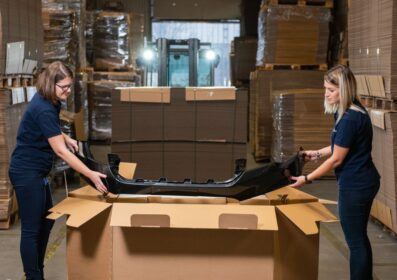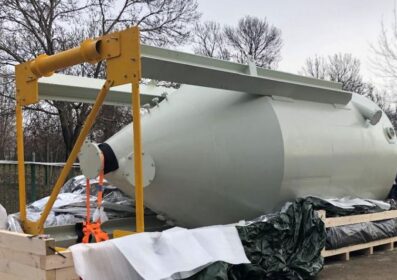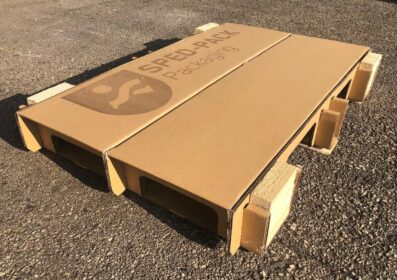Shelf-mounted Bin-box
When we think of logistics, the first thing that comes to mind is transport, but in many cases the storage of products is also an important factor in this process. Our logistics partner asked us to help them with this, because they wanted to have the right storage for their products that were waiting to be packed and shipped.
The design was based on a unique shelving system that our partner wanted to have manufactured for their warehouse. We were given the exact dimensions of the shelving system and how many storage boxes they would like to place on each shelf. In addition, an extra request from our customer was that the products in the bins should be easily accessible without pulling out the bins, yet be resistant to being pulled out, should someone want to pull them out, without damaging the material. All this is done as cheaply as possible, using corrugated board.
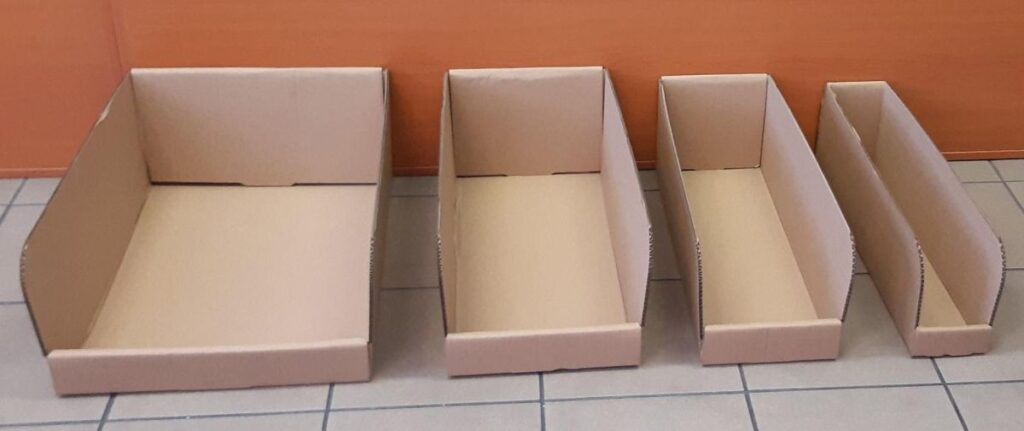
Design
Design aspects
In the first stage of the design, we set out the main considerations:
- that the containers fit comfortably on the shelves
- the products in the bins should be easily accessible
- the containers must be sturdy
- cost-effectiveness
The basics
The design was based on the shelf sizes and the planned quantity of shelves provided by our customer. In this respect, four different box sizes were designed. As easy accessibility of the products was an important consideration, the box design was based on the bin-box design, which is the preferred choice for shelf storage.
Structural design
The bin-box design provides a good basis for easy accessibility of the products, but our container also had to be structurally designed to withstand the need to move the product on the shelf. If someone wants to pull the storage box off the shelf, the easiest way to do this is to grab the front of the box and pull it out of its place. This operation puts the greatest stress on the front of the box, so it was necessary to reinforce this side for strength. The easiest way to do this is to double the material. Naturally, for reasons of cost-effectiveness, we solved this by folding it back, using insertion lugs.
Since we were thinking about a plug-in solution, and cost-effectiveness was also a consideration, we tried to make the whole box by folding, without gluing and stapling. This saved the cost of assembly and the cost of materials. This solution also pleased our customer.
Material selection
The structural design is an important factor in terms of load capacity, but the choice of materials is equally important when designing the individual packaging materials. The material for the storage boxes was selected in consultation with our customer on the basis of the weights they would carry. For this purpose, we chose a BC corrugated material with a lower strength. The five-layer material alone ensures that the box is more resistant to movement, but as these boxes are not designed to be moved by default, a weaker material was optimal from a cost point of view.
Production
Sample production
The sample production for the box was done using a laser plotter. As the box is custom made, we needed a tool for mass production. The laser plotter was a great help in designing this precisely, as it allowed us to test in practice whether our idea would really work. The box was designed in ArtiosCAD and then converted into the right format and cut out on the laser plotter.
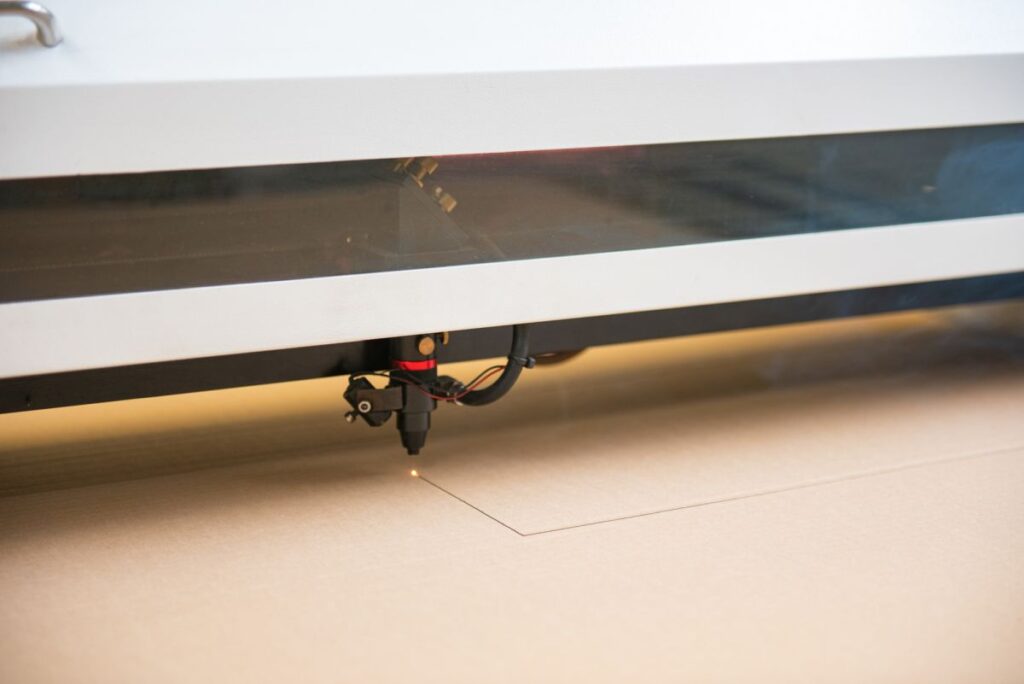
Mass production
For mass production, we needed a punching tool, which we ordered based on the drawings of the sample box. The storage boxes were then cut out on the die cutting machine in the right quantities.
Problems encountered
Since the boxes were designed for a planned shelving system, the shelving system itself was made at the same time as the boxes we produced. A problem that arose was that the shelving system was scaled during production, so that the boxes we produced unfortunately did not fit the height of the shelving spaces provided. As the new size of the boxes would have required completely new tooling, which is a significant expense, and our partner company did not have the budget to order new tooling, so it was not an option. Of course we didn’t despair, as we are partners in solving any problems that may arise efficiently, so with a little extra planning we were able to successfully cut the excess height of the storage boxes using a laser plotter, so that the boxes could be placed on the shelves.
